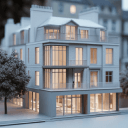The future of home design prioritizes 3D modeling and virtual reality technologies. These technologies allow designers to create detailed and immersive representations of spaces. Studies show that 3D modeling increases client satisfaction by enabling a clear visual understanding of architectural and interior design projects. Virtual reality further enhances this experience, allowing clients to virtually walk through their future homes, giving them a sense of space and design before construction begins. Technologies such as Unity and Unreal Engine drive these advancements, offering realistic simulations of lighting, textures, and materials.
3D modeling software, including ArchiCAD and SketchUp, enables architects to produce accurate and detailed models of buildings. These tools support complex geometries and allow for real-time editing and visualization. Virtual reality headsets, such as Oculus Rift and HTC Vive, immerse users in the designed spaces, making them feel as if they are physically present. This immersion aids in better decision-making regarding space utilization, materials, and finishes. Data from the American Institute of Architects indicates a significant reduction in project timelines and construction errors when these technologies are applied, demonstrating their efficiency and accuracy.
Traditional 2D drafting methods lack the ability to provide immersive experiences and accurate spatial visualizations. Clients often struggle to interpret 2D plans, leading to misunderstandings and prolonged project durations. 3D modeling and virtual reality offer interactive and engaging ways to visualize and modify designs in real-time, ensuring alignment with client expectations.
Arcadium 3D emerges as a tailored solution within this context, offering a browser-based, uncomplicated platform that allows users to spend more than on designing than learning complicated software. This software facilitates the creation of 3D house plans in minutes, distinguishing itself by its simplicity and accessibility. Arcadium 3D stands out as a practical tool for those seeking to explore and implement their home design ideas efficiently, bridging the gap between professional-grade software and user-friendly interfaces for broader audience engagement.
Contents:
Revolutionizing Home Design Through 3D Modeling
How is 3D modeling transforming the world of home design? By allowing architects to create detailed virtual replicas of homes. These replicas serve not merely as static images but as interactive environments. Users can explore various design options, from the layout of rooms to the choice of materials, offering an unprecedented level of customization.
Why do designers prefer 3D modeling? Because it reduces the risk of errors significantly. With traditional methods, misunderstandings between the client and the designer can lead to costly mistakes during construction. In contrast, 3D models present a clear and accurate representation of the final product, ensuring that all parties share the same vision. This accuracy aids in decision-making and saves time and resources.
How does 3D modeling benefit clients? It empowers them with the ability to visualize their future home before any physical work begins. This visualization goes beyond mere imagination, providing a tangible experience that can be modified in real-time. Clients can adjust colors, textures, and fixtures with a few clicks, facilitating a more involved and personalized design process.
In terms of efficiency, traditional design processes pale in comparison to the speed and flexibility of 3D modeling. Where traditional methods are constrained by the time-consuming need to redraw plans for every change, 3D modeling software instantly updates every aspect of the design with each adjustment. This not only accelerates the design phase but also significantly reduces the potential for human error, positioning 3D modeling as the superior choice for modern home design.
The Impact of Virtual Reality on Architectural Visualization
How has virtual reality transformed architectural visualization? By offering immersive experiences, virtual reality brings designs to life. Clients don helmets, step into their future homes, and explore every corner, allowing them to appreciate the spatial dynamics and aesthetic details firsthand. Architects receive immediate feedback, facilitating a collaborative design process.
What makes virtual reality superior for presenting complex projects? It simplifies understanding spatial relationships. Traditional blueprints and 3D models on screens fall short in conveying the true sense of space and depth. Virtual reality, however, places viewers inside the project, offering a perspective that showcases how different spaces interconnect and the flow between rooms.
Can virtual reality influence decision-making in design? Absolutely. By experiencing designs in a fully immersive environment, clients can make informed choices about materials, colors, and layouts. This technology eliminates guesswork, ensuring that the final product aligns with their expectations. Moreover, it detects potential design issues before construction begins, saving time and resources.
In terms of clarity and engagement, virtual reality stands out against traditional visualization techniques. Clients immersed in a virtual environment understand a project's scope and details more profoundly than by viewing 2D drawings or simple 3D models. This engagement not only makes the decision-making process smoother but also enhances satisfaction with the final outcome, showcasing virtual reality's pivotal role in modern architectural visualization.
Trends in 3D Modeling Software for Home Design
What distinguishes the leading trends in 3D modeling software for home design? Real-time rendering capabilities stand out prominently. These technologies enable architects to create lifelike simulations of homes, allowing clients to virtually walk through their future residences. Tools integrate seamlessly with virtual reality headsets, providing an immersive experience unlike any other.
How are user interfaces evolving in this software category? Simplification marks the dominant trend. Modern software boasts intuitive controls and user-friendly interfaces, ensuring that even those with minimal technical knowledge can bring their visions to life. This democratization of design tools empowers more individuals to participate in the home design process, fostering creativity and innovation.
Why is collaboration functionality becoming a staple in 3D modeling software for home design? Enhanced collaboration tools address the need for teamwork. These features allow multiple users to work on a single project simultaneously, regardless of their physical location. Cloud-based storage solutions facilitate this by storing projects online, enabling real-time updates and feedback.
3D home design software with virtual reality capabilities exhibits a faster adaptation rate among professionals than traditional CAD tools. The immersive experience offered eclipses the flat, two-dimensional views of past software. The ability for clients to visualize and modify their future homes in real-time underlines a significant advantage over older methods that rely on static images or physical models. The trend towards more intuitive user interfaces in 3D modeling software underscores its wider accessibility, contrasting sharply with the steep learning curves associated with traditional design tools.
Why is cross-platform accessibility crucial in home design technologies? It ensures seamless interaction across various devices, like smartphones, tablets, and computers. Users benefit from the flexibility to switch devices without losing progress on their design projects. Architects, interior designers, and clients collaborate effectively, sharing updates and feedback instantaneously.
How does this accessibility impact the efficiency of design implementation? It significantly reduces the time from concept to completion. Designers can make real-time adjustments, clients approve changes swiftly, and all stakeholders maintain an updated view of the project. This process eliminates delays caused by miscommunication and ensures that the final product aligns closely with the client's vision.
What role do cloud-based solutions play in enhancing cross-platform accessibility? They store all project data securely online, making it available anytime, anywhere, on any device with internet connectivity. This approach supports simultaneous access by multiple users, fostering a collaborative environment. Cloud storage becomes a central hub for resource sharing, including 3D models, texture libraries, and design templates.
Cross-platform accessibility in home design technologies shows a broader reach and inclusivity than traditional methods, which often limit user interaction to specific, high-end software accessible only on particular operating systems or powerful computers. This new approach embraces users with varying levels of expertise and equipment capabilities, democratizing the design process. As a result, innovation flourishes, and a wider array of designs emerges, catering to diverse preferences and needs.
Sustainability and Eco-Friendly Planning with 3D Models
How do 3D models enhance sustainability in home design? They enable architects to visualize energy flows and resource needs accurately. Designs incorporate solar panels, rainwater harvesting systems, and geothermal heating solutions. Consequently, homes use less fossil fuel, reduce water consumption, and lower carbon emissions.
Can virtual reality contribute to eco-friendly building practices? Absolutely. Virtual reality simulations assess the environmental impact of a structure before construction begins. They simulate various scenarios, including extreme weather conditions and natural disasters, ensuring homes are resilient and sustainable. Thus, resources are preserved, and ecosystems remain undisturbed.
Why is eco-friendly planning important for future home designs? It minimizes waste and promotes the reuse of materials. Strategies include employing reclaimed wood, recycled steel, and low-VOC paints. This approach diverts waste from landfills, decreases air and water pollution, and conserves natural resources.
Eco-friendly planning with 3D models and virtual reality proves more effective in reducing environmental impact than traditional methods. These advanced technologies allow for the optimization of natural light and ventilation, significantly lowering energy consumption. Meanwhile, traditional designs often overlook these aspects, leading to increased use of artificial lighting and heating.
Cost-Effective Home Design Solutions
Is cost a barrier to innovative home design? Not necessarily. 3D modeling and virtual reality have become more accessible, making high-end designs more affordable. These tools decrease the need for physical materials, such as paper and wood, for prototypes. Clients save money on both materials and labor, as changes can be implemented quickly and inexpensively in a virtual environment.
Do these technologies offer more than just savings? Absolutely. They enhance precision and efficiency in the design process. Errors are identified and corrected early, preventing costly adjustments during construction. Architects can explore a broader range of options and alternatives, ensuring the final design meets all homeowner requirements with fewer compromises.
How does virtual reality change client interactions? It revolutionizes them. Clients experience their future homes before construction begins, offering feedback that leads to more satisfactory outcomes. This immersive experience strengthens the client-designer relationship, fostering trust and confidence. Adjustments are made in real-time, accelerating the decision-making process and ensuring the project remains on schedule.
In terms of return on investment, traditional design methods lag behind. 3D modeling and virtual reality lead to significant reductions in time and resources spent, while simultaneously increasing client satisfaction and engagement. Projects complete faster, with fewer errors, resulting in higher profitability and client referral rates. This paradigm shift marks a significant advancement in architectural design, setting a new standard for efficiency and client-centric solutions.
The Role of VR in Customizing Interiors
How does VR transform the process of interior customization? By enabling clients to visualize their spaces in immersive detail before making any physical changes. Designers use virtual reality tools to create lifelike simulations of rooms, allowing adjustments in colors, furniture placement, and lighting with just a few clicks. This direct manipulation contrasts sharply with traditional methods, where changes often require physical labor and imagination to visualize.
What benefits do clients enjoy with VR in interior design? They gain unparalleled control over the design process. Users can experiment with an array of textures for upholstery, wall finishes, and floorings, exploring various styles without the commitment of purchasing or installing physical products. This experimentation eliminates guesswork, ensuring the final design aligns perfectly with their preferences.
How does virtual reality impact decision-making in design? By providing a risk-free environment for experimentation. Homeowners and designers can test bold, unconventional ideas in the virtual space, discovering unique combinations that elevate the aesthetics and functionality of a room. The immediate feedback loop, where every alteration is instantly visible, accelerates the decision-making process, streamlining the journey from concept to completion.
Virtual reality offers a depth of customization and flexibility unattainable through traditional design approaches. Where physical samples and mock-ups limit the exploration of possibilities, VR invites an infinite variety of configurations. This technology not only saves time and resources but also ignites creativity, allowing for the creation of spaces that truly reflect the individual's personality and needs, setting a new standard in personalized interior design.
Future Projections: Smart Homes Integrated with VR and 3D Modeling
How will the integration of smart homes with VR and 3D modeling enhance daily living? Significantly, by facilitating more intuitive interaction between occupants and their living environments. Smart thermostats, for instance, adjust temperatures based on historical preferences, while intelligent lighting systems adapt to natural light levels, reducing energy consumption. These examples underscore the synergy between user comfort and efficiency.
What benefits do smart homes integrated with VR and 3D modeling offer for home security? Substantially, by providing real-time surveillance through virtual walkthroughs. Security cameras, a subclass of smart devices, transmit live feeds directly to homeowners’ VR devices, ensuring immediate awareness of any intrusion. Door locks, another subclass, can be remotely controlled, allowing for secure entry and exit without physical keys, thereby diminishing the risk of unauthorized access.
Can smart homes that leverage VR and 3D modeling improve accessibility for individuals with disabilities? Absolutely, by customizing environments to meet their specific needs. Voice-activated systems, a type of smart technology, enable users with mobility challenges to control various aspects of their home, from opening doors to adjusting thermostats, without physical effort. Similarly, VR simulations can be used for designing spaces that are navigable by people with visual impairments, ensuring safety and independence.
Smart homes integrated with VR and 3D modeling are ushering in an era where manual tasks are minimized, and personalized convenience is maximized, more so than in traditional homes. For the elderly, voice commands simplify operating appliances, a significant improvement over manual interfaces. For the environmentally conscious, energy-saving adjustments happen autonomously, a leap forward from manual monitoring. For those seeking security, real-time virtual monitoring provides peace of mind, a stark contrast to static, conventional security systems.


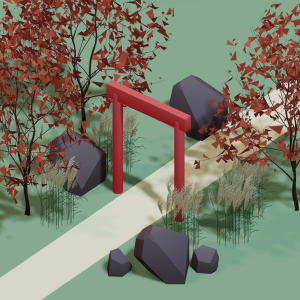 All training, tips and articles
All training, tips and articles
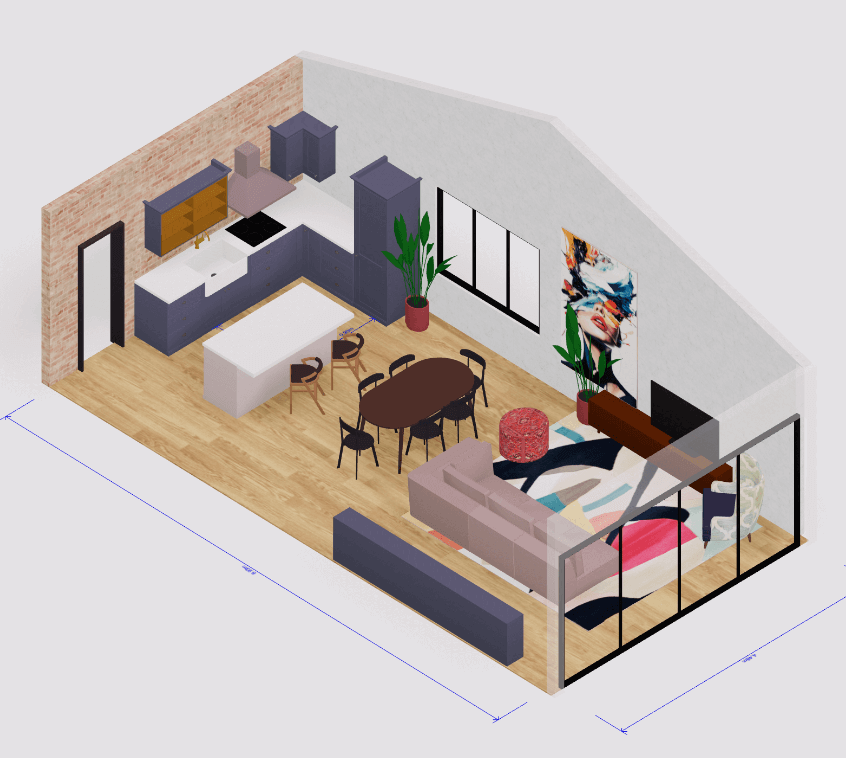 3D house design tool
3D house design tool
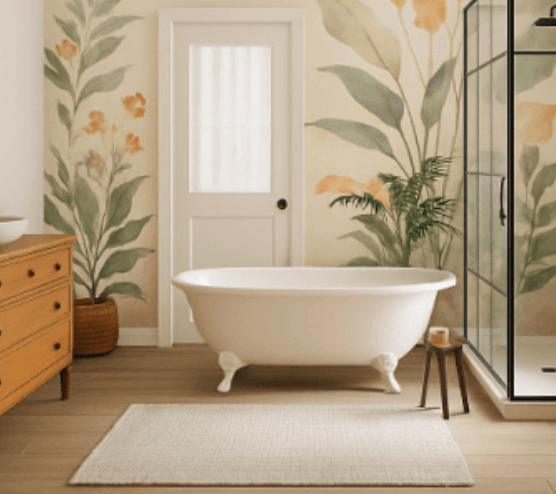
 Color palette generator
Color palette generator
 Floor plan creator
Floor plan creator
 Interior design app
Interior design app
 Kitchen design tool
Kitchen design tool
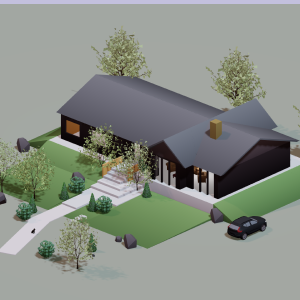 House design software
House design software
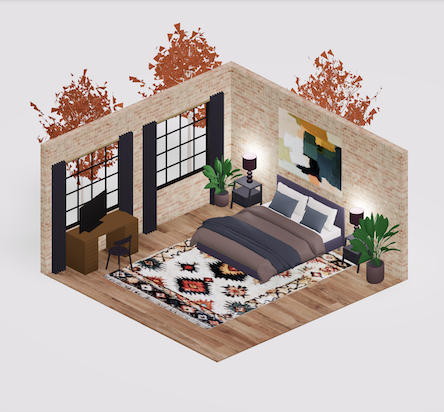 Room designer
Room designer
 Landscape design software
Landscape design software
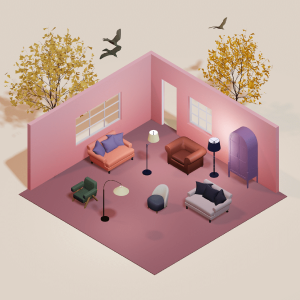 Bedroom design
Bedroom design
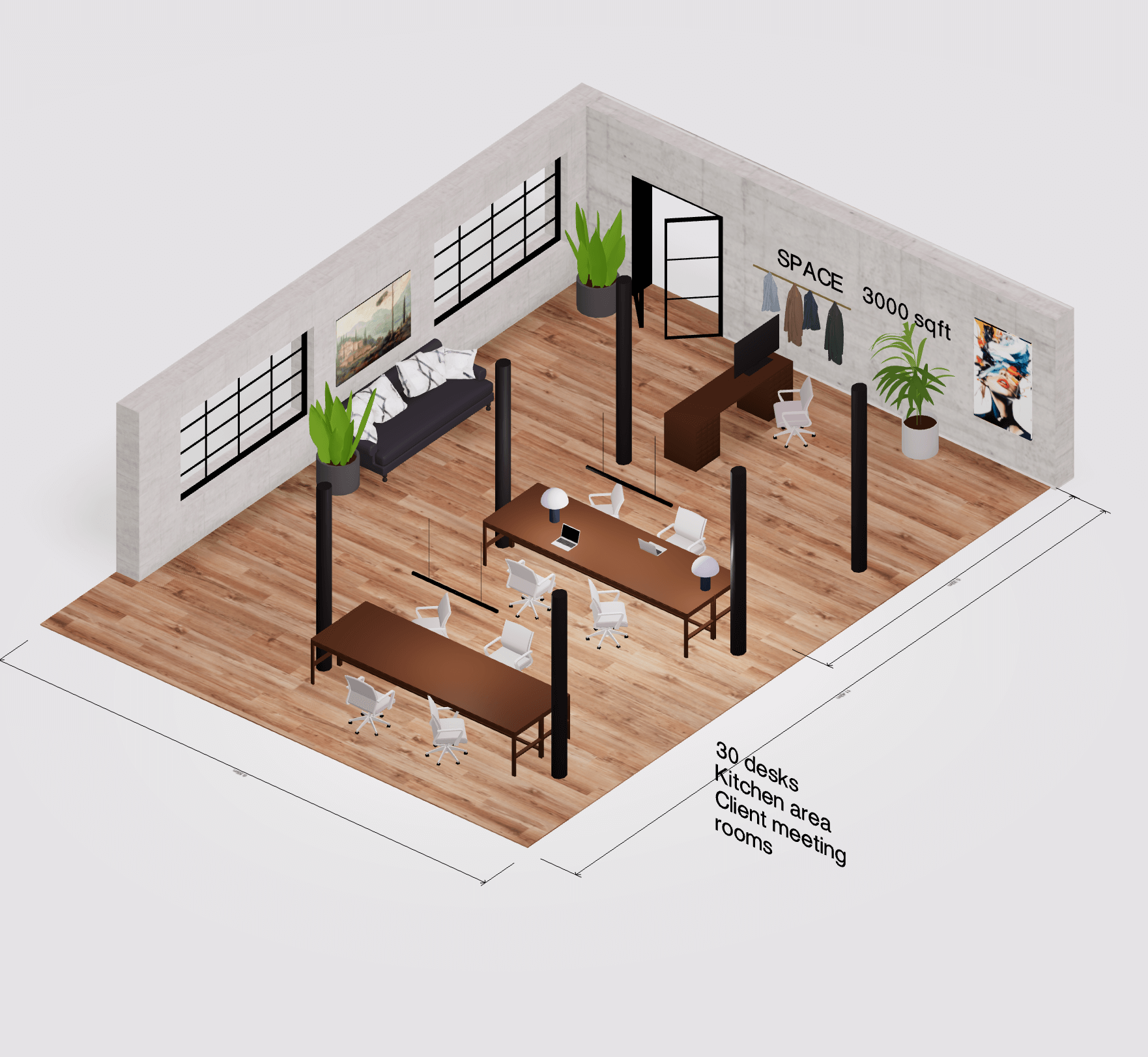 Office floor plan creator
Office floor plan creator
.png)



